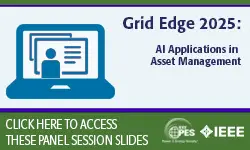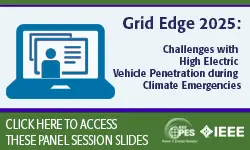-
Members: FreePES
IEEE Members: $45.00
Non-members: $70.00Pages/Slides: 19
15 Dec 2016
The nature of the power grid is changing, with distribution connected power sources playing an increasing role. Distributed energy resources, DER generation and electrical storage, are commonly interfaced to the grid using power electronic inverters. Inverter interfaced sources differ fundamentally from synchronous generators. Synchronous generators are well represented in power system analysis by a constant ac voltage source in series with a reactance. Inverter based generators, however, generally behave like constant ac current or power sources. This current source characteristic has profound impact on the overvoltages caused by ground faults, and therefore grounding requirements. Assessment of system grounding, as defined in IEEE C62.92.1, must properly consider this behavior if inverter coupled DER are the dominant power sources once a portion of distribution system becomes isolated. This report provides background and technical discussion of the definition and evaluation of system grounding in situations, along with the effectiveness of supplemental ground sources, where current regulated sources energize an isolated subsystem.
Primary Committee:
Surge Protective Devices Committee
Sponsor Committees:
High-Voltage Subcommittee, Working Group 3.5.7 Neutral Grounding


